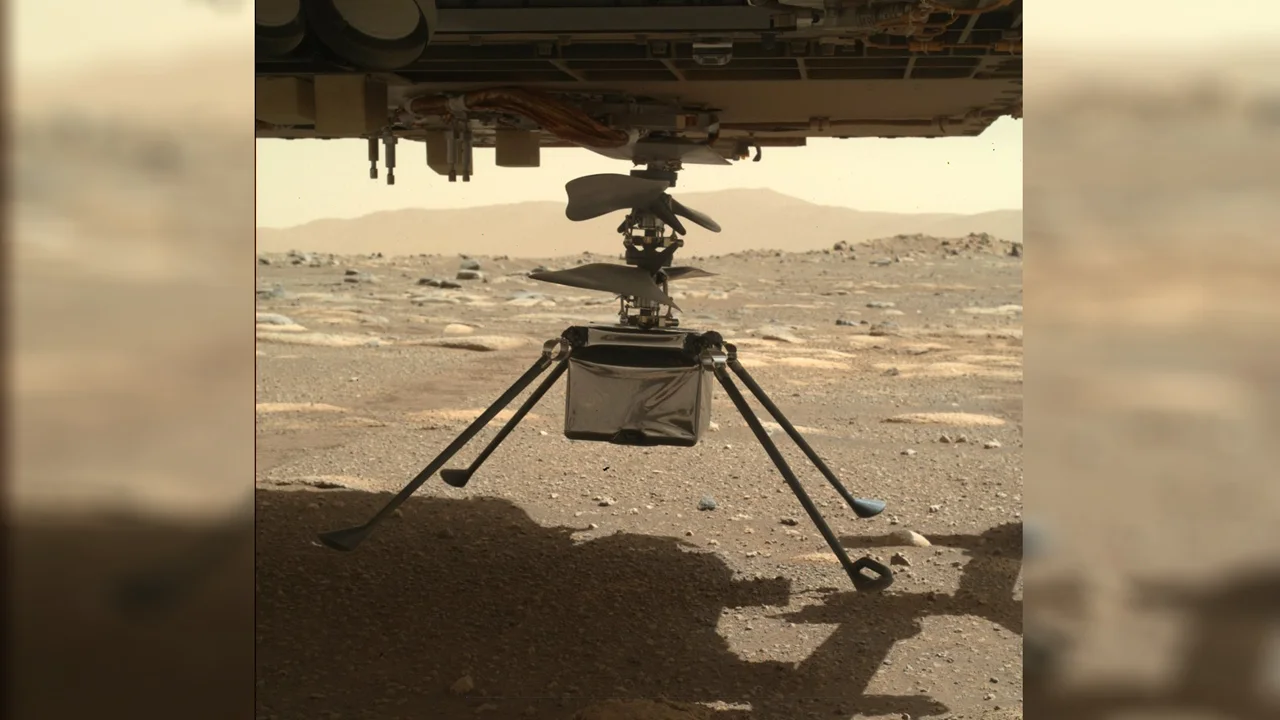
What's up in space for 2021? Here's our guide to the best events of the year
Follow along with this guide to the major events in space and astronomy for all of 2021
Whether you are looking for memorable celestial events to see in our skies or spectacular space missions to follow, 2021 is shaping up to be an excellent year for both!
Editor's note: Originally published on January 6, 2021, this article has been updated to reflect the latest information on these events and space missions.
Just by looking up into the sky on the right night and at the right time, there is plenty to see in the months ahead. Meteor showers promise spectacular displays. There are two solar eclipses at opposite ends of the Earth this year. Also, May features the next "super" total lunar eclipse.
Meanwhile, space enthusiasts have their attention almost exclusively rooted to Mars for the month of February, when no fewer than three new missions will be arriving at the Red Planet. Among these, NASA's Perseverance rover and its tiny drone companion Ingenuity will be making a harrowing "7 minutes of terror" landing on the 18th. Add to that, new records being set by the Parker Solar Probe, the OSIRIS-REx spacecraft departing for home with its asteroid sample, a potential robot Moon landing, the launch of the James Webb Space Telescope, and even more astounding images and science from Jupiter. It's shaping up to be a very busy year, and this is just a sample of what's to come!
(ON OR AROUND) EARTH
The Moon and the weather were not very kind to most hoping to see the peak of the Quadrantid meteor shower in the first few days of the year. Still, a few meteor showers coming up promise to be particularly good — if the weather cooperates. Specifically, watch for the Eta Aquariids on the night of May 4, the Perseids on the night of August 11, and the Southern Taurids on October 9. Each of these meteor showers occurs on a night when the Moon will not present a lot of competing light (which tends to 'wash out' the dimmer meteors).
In particular, the August Perseids are expected to be exceptionally good. It puts on a great display with around 50-75 meteors per hour, and many show up as bright fireballs!
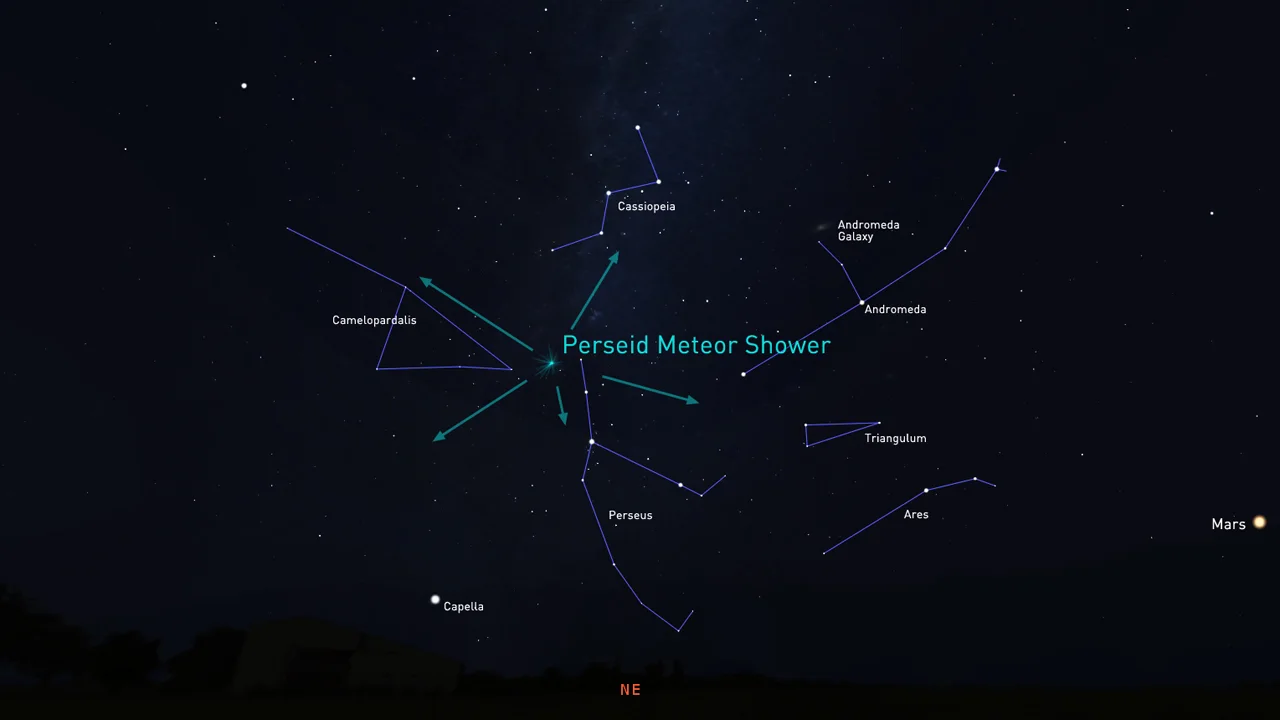
The radiant of the Perseid meteor shower, in the constellation Perseus, on the night of August 11-12. Credit: Stellarium/Scott Sutherland
Sometime in early January, we should see the SpaceX Starship SN9 suborbital launch. Although the dates for the first orbital Starship flight keep getting pushed back, the way things are going, we may see this new rocket take the next leap before the end of 2021. Unlike a suborbital flight, an orbital flight sends the rocket all the way around the planet, at least once, before having it touch down again!
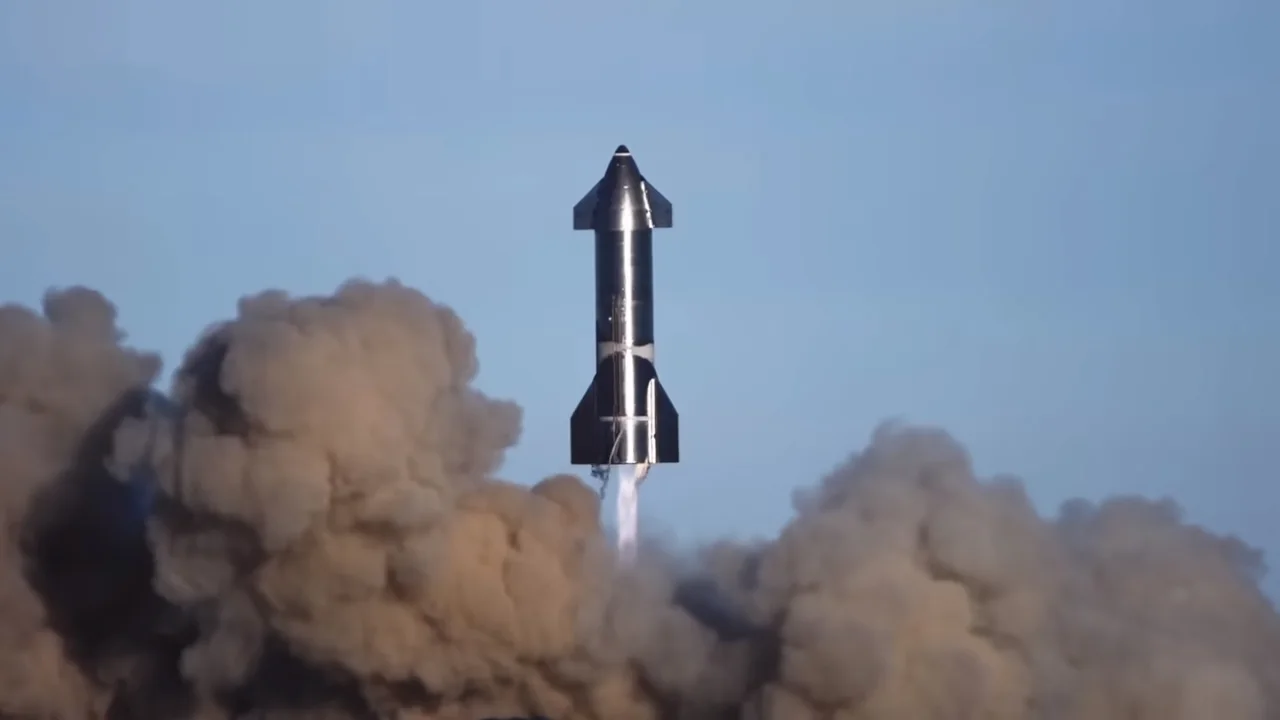
Starship SN8 launches on December 10, 2020, reaching 12 kilometres above the ground before making a fiery return to the landing pad. Credit: SpaceX
At the end of March, Boeing is scheduled to make a second uncrewed orbital test flight (OFT-2) of their CST-100 Starliner spacecraft. A software problem caused their first test flight to the International Space Station, back in December of 2019, to fail. Boeing proposed this second test to ensure the spacecraft is ready to carry astronauts into space.
If successful, this second unpiloted flight will likely be followed up by their first crewed test flight, sometime around mid-year.
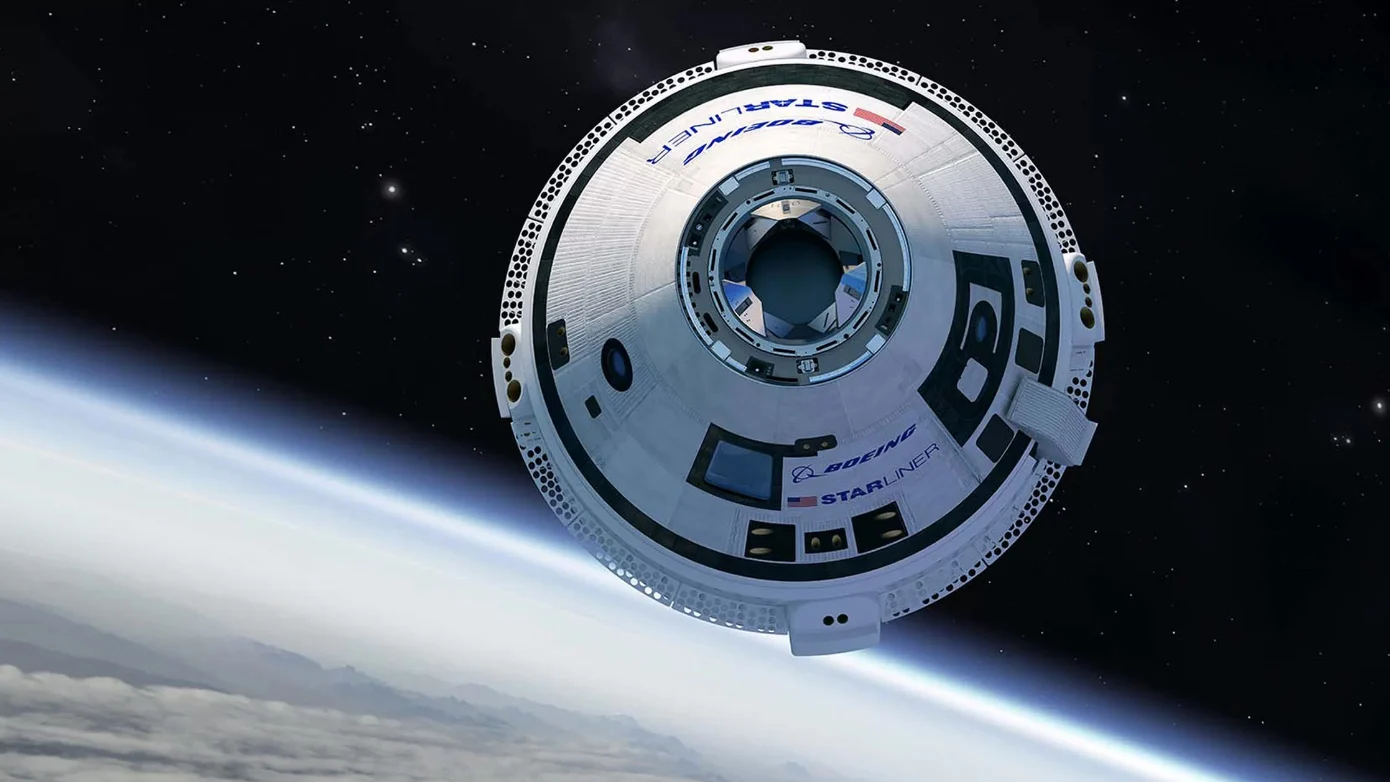
This artist's rendition of the Boeing CST-100 Starliner shows the spacecraft in orbit after launch. Credit: Boeing
Although not specifically about space, watch for the Large Hadron Collider to start up again in September of this year. After being taken offline in December of 2018, the immense particle accelerator has undergone extensive upgrades in preparation for its next run.
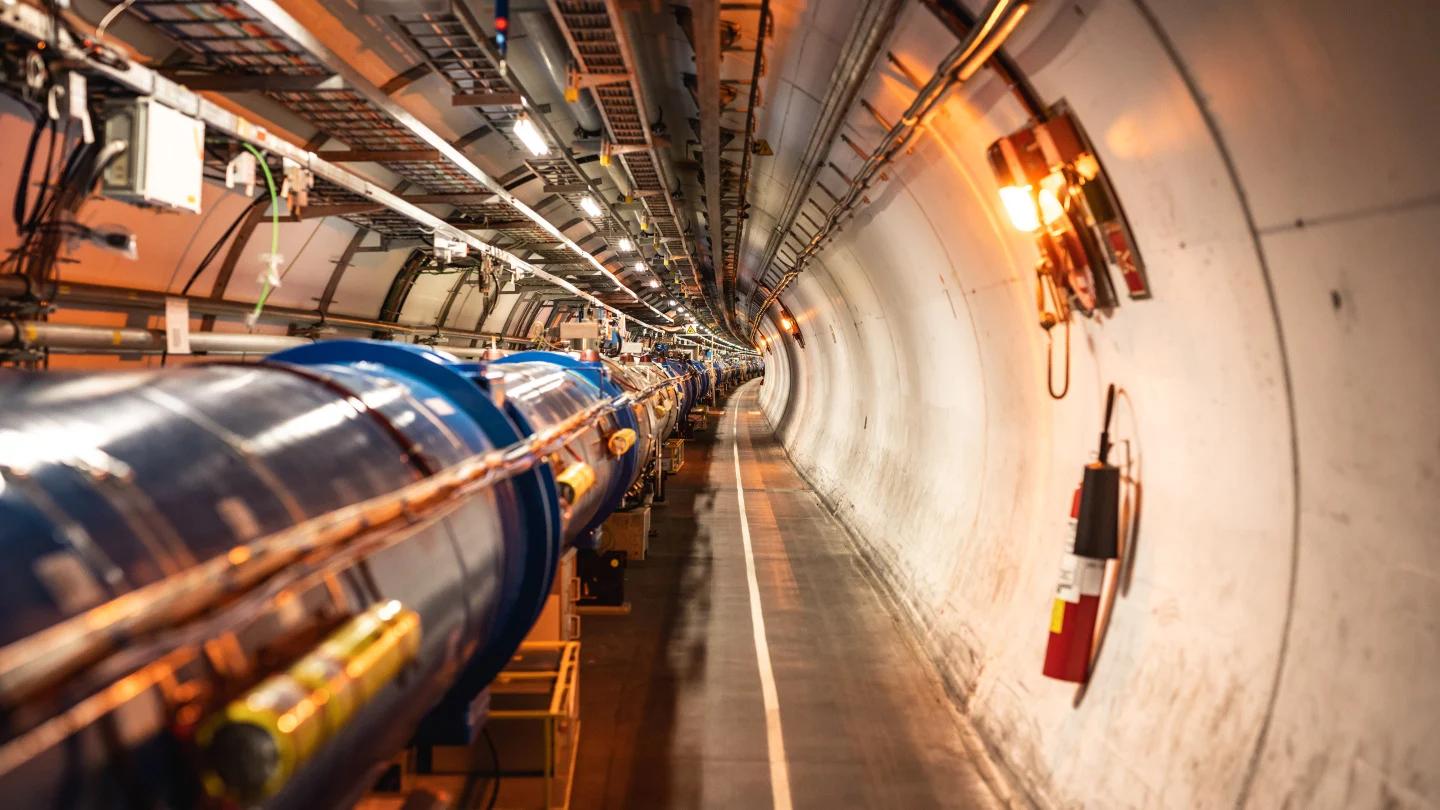
Once it starts up, the facility will be running experiments until the end of 2024.
THE MOON
Back in January of 2019, there was an exceptional total lunar eclipse that earned the nickname Super Blood Wolf Moon. We haven't seen another lunar eclipse like it since. In the pre-dawn sky on May 26, 2021, the Sun, Earth and Moon will finally line up just right again, though, to produce the Super Blood Flower Moon.
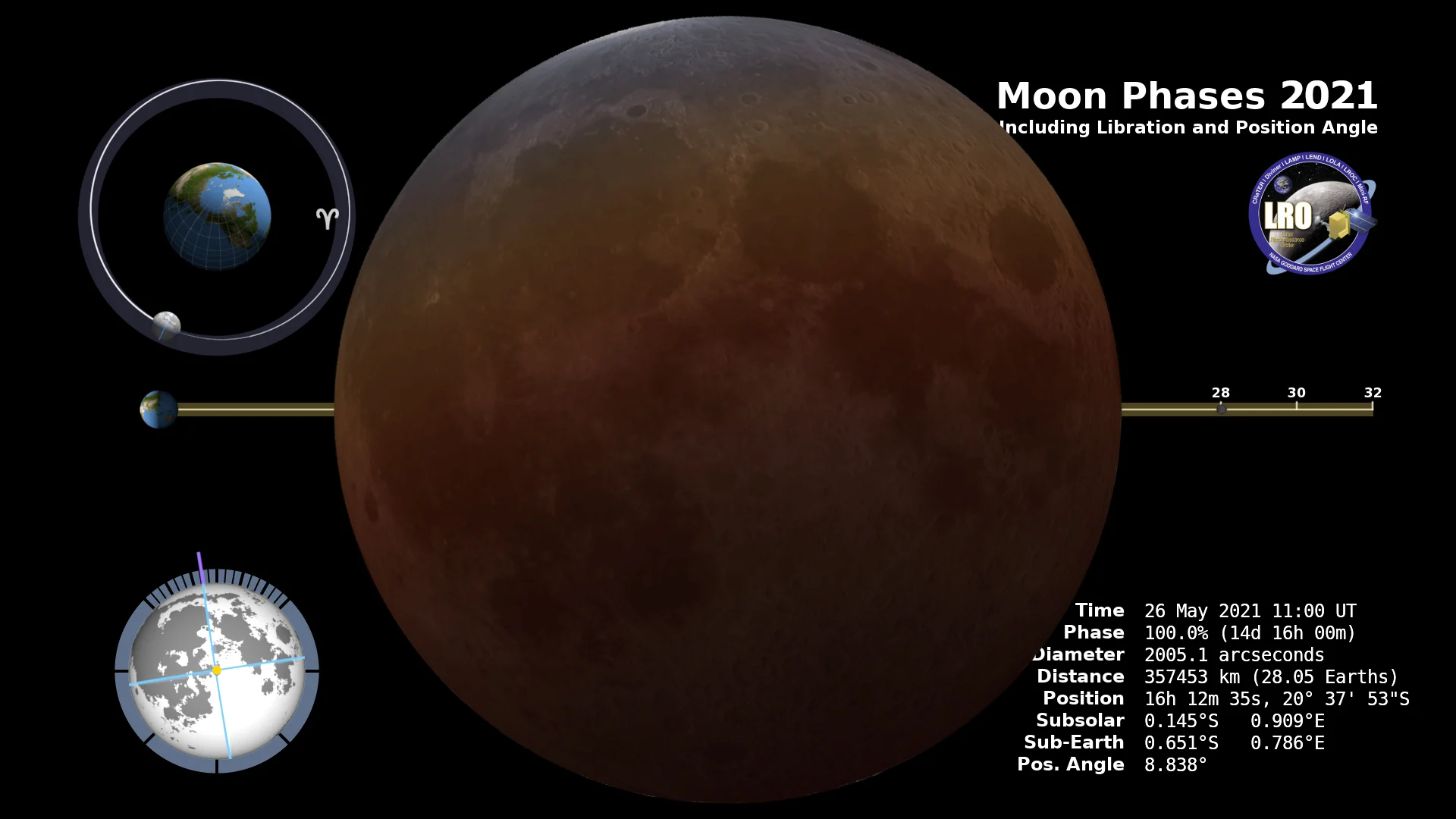
This frame from NASA's Moon Phase and Libration 2021 animation showing the exact moment of maximum eclipse on May 26 has been overlayed with an approximation of what the Super Blood Flower Moon will look like at the time. Credit: NASA's Scientific Visualization Studio/Stellarium/Scott Sutherland
It's not quite as flashy a name. It's doubtful Stephen Colbert would have named his "Goth Dad Band" after it, or that it'll earn a song by Pearl Jam, but this is a notable one. At just 357,453 km from Earth during the eclipse, this is actually a slightly closer and slightly larger 'blood moon' than we saw in 2019. It will also be the last 'super' total lunar eclipse in over a decade. The next one will be the Super Blood Harvest Moon in October 2033.
As for what's happening on the Moon, China's Chang'e 5 lander ceased operations in early December, once it launched its sample return back to Earth. However, their Chang'e 4 mission, with its Yutu 2 rover, continues to explore the lunar far-side.
Later this year, currently planned for sometime in July, Astrobiotic's Peregrine lunar lander is expected to launch. Peregrine will deliver 30 different science payloads to the Moon's surface, including two rovers. One is a four-legged walking robot named Asagumo, built by UK company Spacebit. The other is a rolling rover named Yaoki, by Japanese company Dymon.
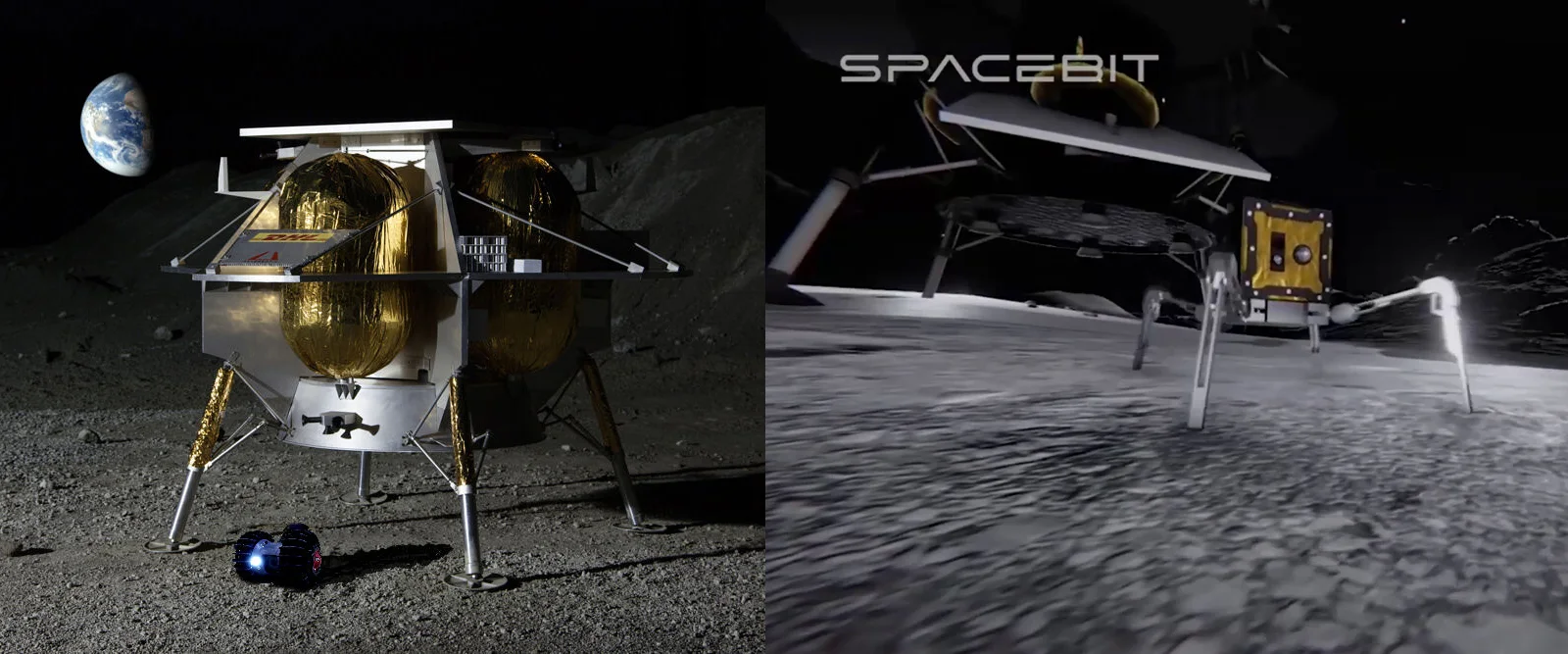
In these artist impressions, the Peregrine lunar lander deploys Japan's Yaoki rover (left) and the UK's Asamugo rover (right). Credit: Astrobiologic/Spacebit
If all goes as planned for NASA this year, we may see their Orion spacecraft launch atop the new Space Launch System (or SLS) rocket for its first flight around the Moon and back. Hopefully taking place sometime in November 2021, this will be an uncrewed flight, simply to test the launch system and the spacecraft's ability to make the journey.
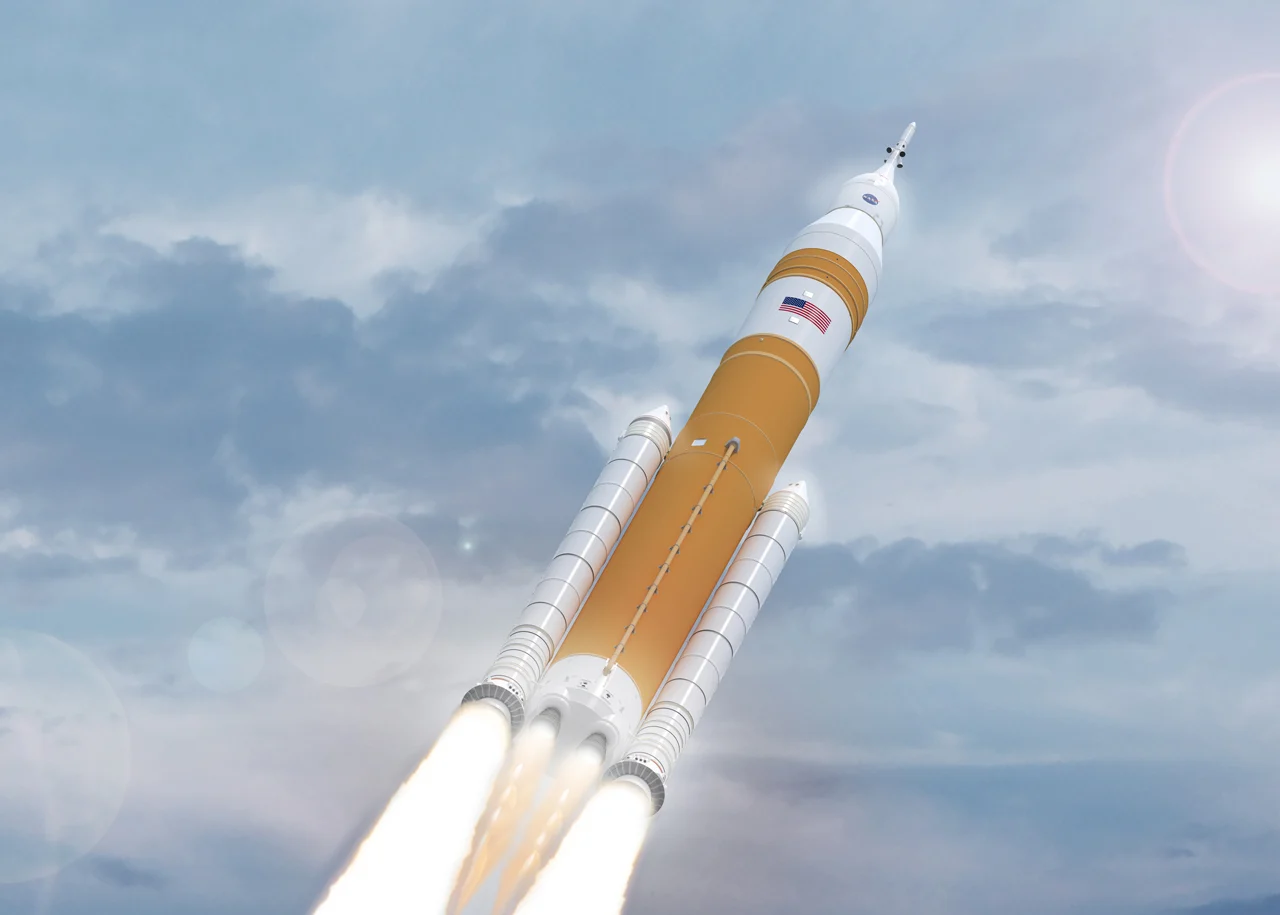
This illustration shows the SLS rocket blasting towards space. Credit: NASA
The first crewed Orion flight, which will include a Canadian astronaut, is currently scheduled for sometime in 2023.
UPDATED: DEEP SPACE
After a successful sample collection back in October, the OSIRIS-REx spacecraft is ready for the long journey home.
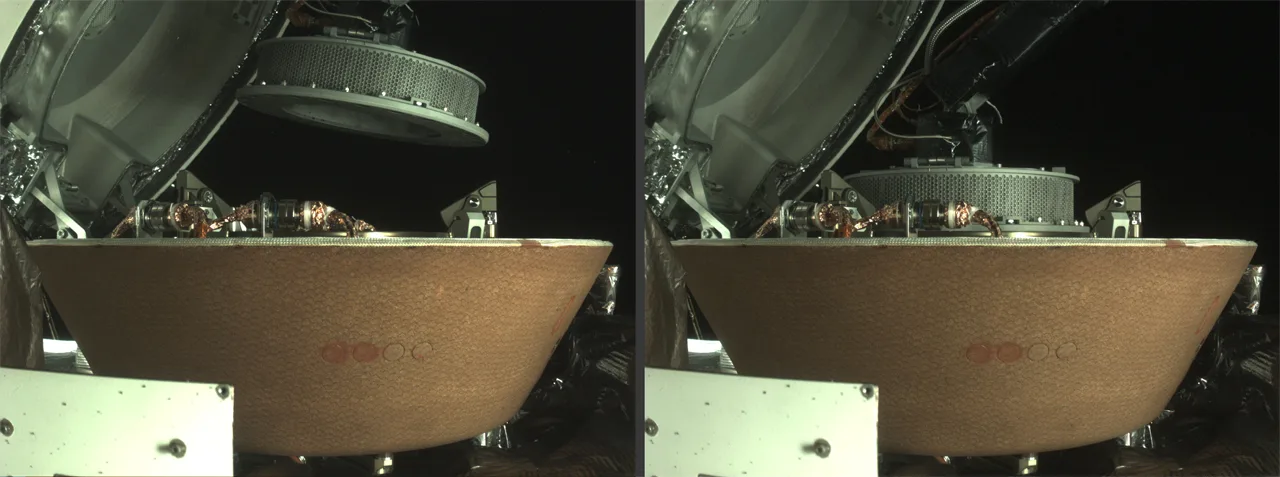
These images sent back by the OSIRIS-REx spacecraft show it stowing its asteroid sample for delivery back to Earth. Credit: NASA
Arriving at near-Earth asteroid Bennu back on New Year's Eve 2018, OSIRIS-REx has produced some stunning maps of this immense 'rubble pile' in space. It has also captured some bizarre science going on there. The primary purpose of this mission, however, was to collect a sample of the asteroid for return to Earth. Having completed that important task on October 20, last year, the only major mission objective left for the spacecraft is to now fly home.
UPDATE (April 1, 2021): NASA has set a date of May 10, 2021 for the start of OSIRIS-REx's journey home. Before that happens, though, the spacecraft will perform one more close flyby of asteroid Bennu, coming to within 3.7 kilometres of its surface. During this maneuver OSIRIS-REx will evaluate the condition of its instruments and observe the changes it caused in the surface during last year's sample collection.
Once the spacecraft is on its way, it is expected to drop off its asteroid sample sometime in September of 2023.
While this asteroid spacecraft gets underway, two more are scheduled to launch from Earth in 2021.
NASA's DART mission — the Double Asteroid Redirection Test — is currently targetting July 22 for liftoff. The spacecraft's destination is the double asteroid Didymos. The primary of the system is an 800 meter-wide space rock, and it is orbited by a smaller 170 metre asteroid, technically a 'mini-moon', named Dimorphos.

This artist's depiction shows DART's encounter with Didymos and Dimorphos in 2022. Credit: NASA/JHAPL
DART's objective is to slam directly into Dimorphos in September of 2022. At the time, the asteroid will be roughly 11 million kilometres from Earth (around 28 times farther away than the Moon), which will allow telescopes to see how much the impact affects the mini-moon's orbit. From this, scientists hope to learn if they could use a similar tactic to deflect an asteroid away from Earth, should one become a danger to us in the future.
In October or November of this year, NASA's Lucy mission is scheduled to launch. This spacecraft has a full itinerary for its 12-year mission, as there are plans for it to visit six different asteroids. Starting in 2025, the first target will be a 4-km wide carbonaceous asteroid named 52246 Donaldjohanson, which orbits the Sun in the inner asteroid belt.
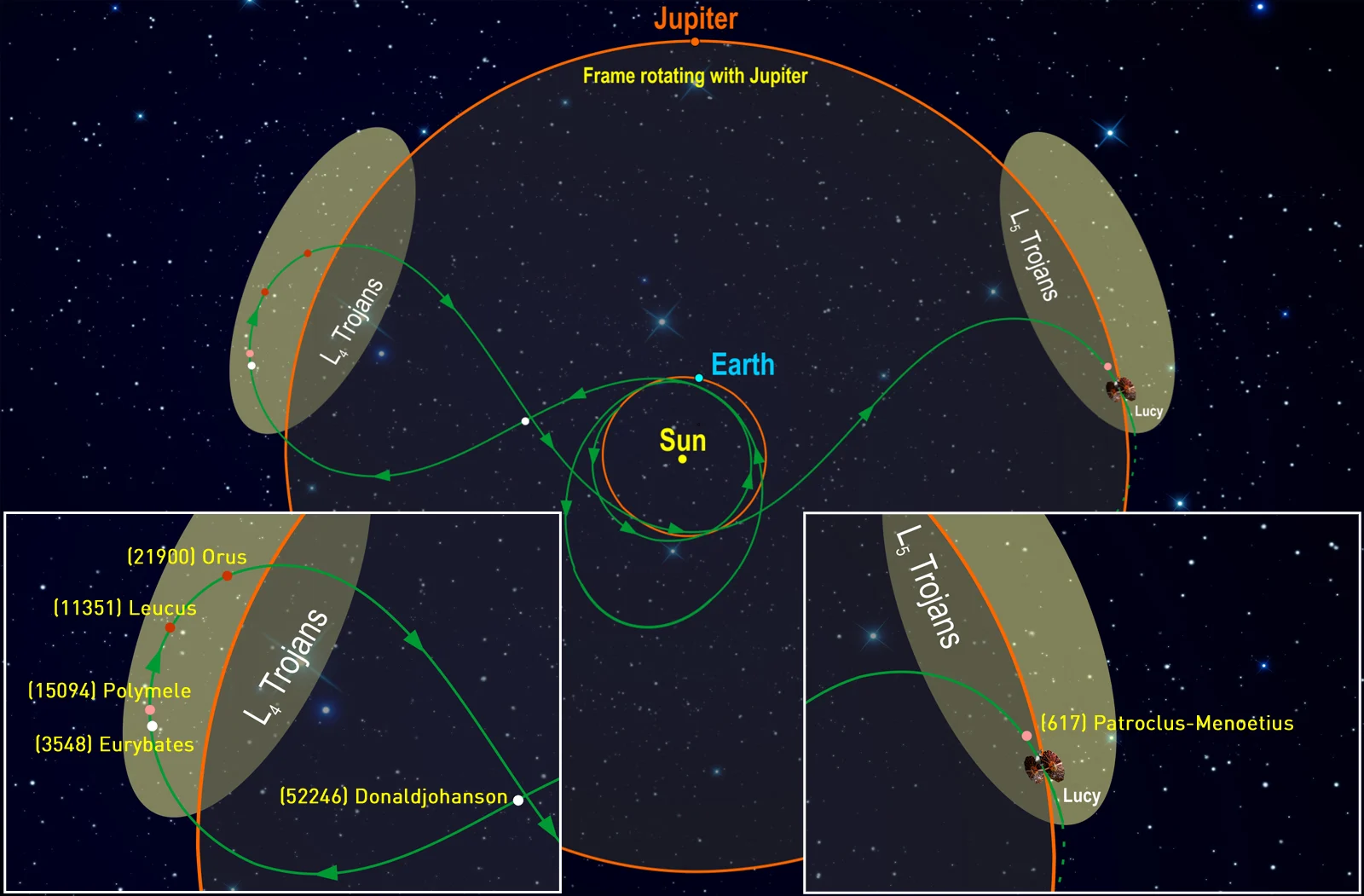
This diagram shows Lucy's 12-year journey through the solar system, as it visits six different asteroids from 2025-2032. Credit: NASA/SwRI
After that, from 2027-2028, it will visit four targets in the 'cloud' of Trojan asteroids that orbit ahead of Jupiter — 3548 Eurybates, 15094 Polymele, 11351 Leucus, and 21900 Orus. Then, after an Earth gravity assist, it will visit another target — the binary asteroid 617 Patroclus-Menoetius — that resides in the Trojan cloud that follows along behind Jupiter in its orbit.
The final "deep space" mission of 2021 is the long-awaited launch of the successor to the Hubble Space Telescope — the James Webb Space Telescope.

This artist's rendition shows the James Webb Space Telescope fully deployed and viewing the universe. Credit: NASA
Astronomers have been looking forward to this launch for years now. The 2018 delay, due to suffering a rip in the sunshield during a test, was just the latest. The original launch date of the James Webb Space Telescope was all the way back in 2007!
Unlike Hubble, which primarily gathers visible light (with a bit of stretch into the ultraviolet and infrared), James Webb is an infrared telescope. This allows it to see through our dusty galaxy, thus giving a clear view of objects in the arms and core of the Milky Way, and far beyond as well. Also, with a mirror surface over six times larger than Hubble's, JWST can collect more light, and thus see much fainter objects. It will even be able to see farther back in time than any other telescope, likely giving us a clear view of the very first stars to form in the universe!
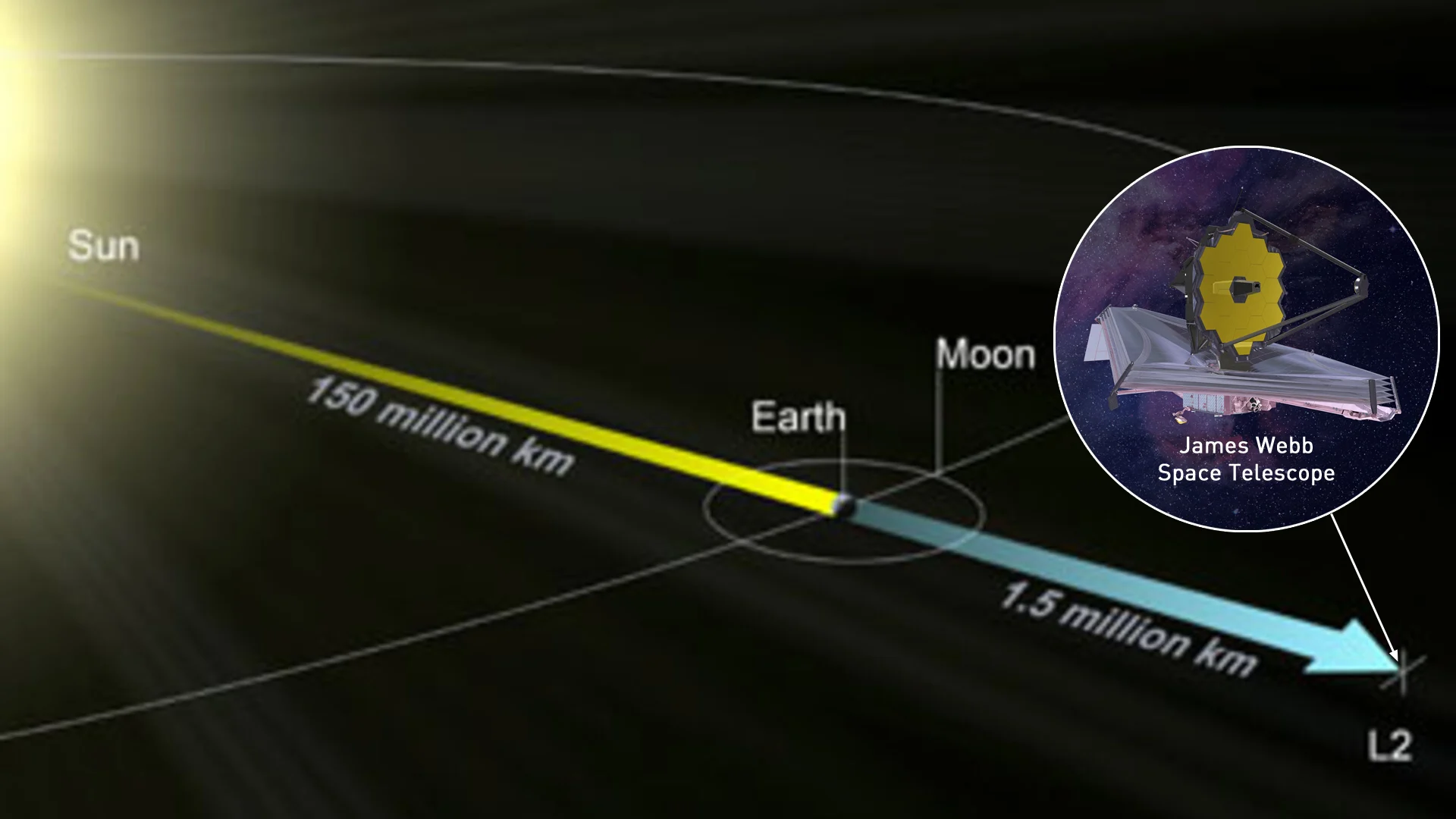
This graphic shows the James Webb Space Telescope and its destination at L2. Credit: ESA/NASA
With a Halloween launch date, JWST's destination is Lagrange Point 2 — a stable gravitational point located 1.5 million kilometres beyond Earth's orbit. There, it will remain at that same relative distance from our planet, while scanning the universe beyond our solar system with unprecedented detail.
Given the number of scientific discoveries no doubt just waiting out there in space for this amazing piece of technology to find them, the benefits we get from JWST will certainly make up for the time we had to wait.
UPDATED: MARS
Mars' active robot population will more than double in 2021. The Curiosity rover is still exploring Gale Crater and Mount Sharp, and the InSight lander continues to listen for marsquakes, with a new mission extension until the end of 2022. Meanwhile, three more missions are set to arrive at the Red Planet in February.
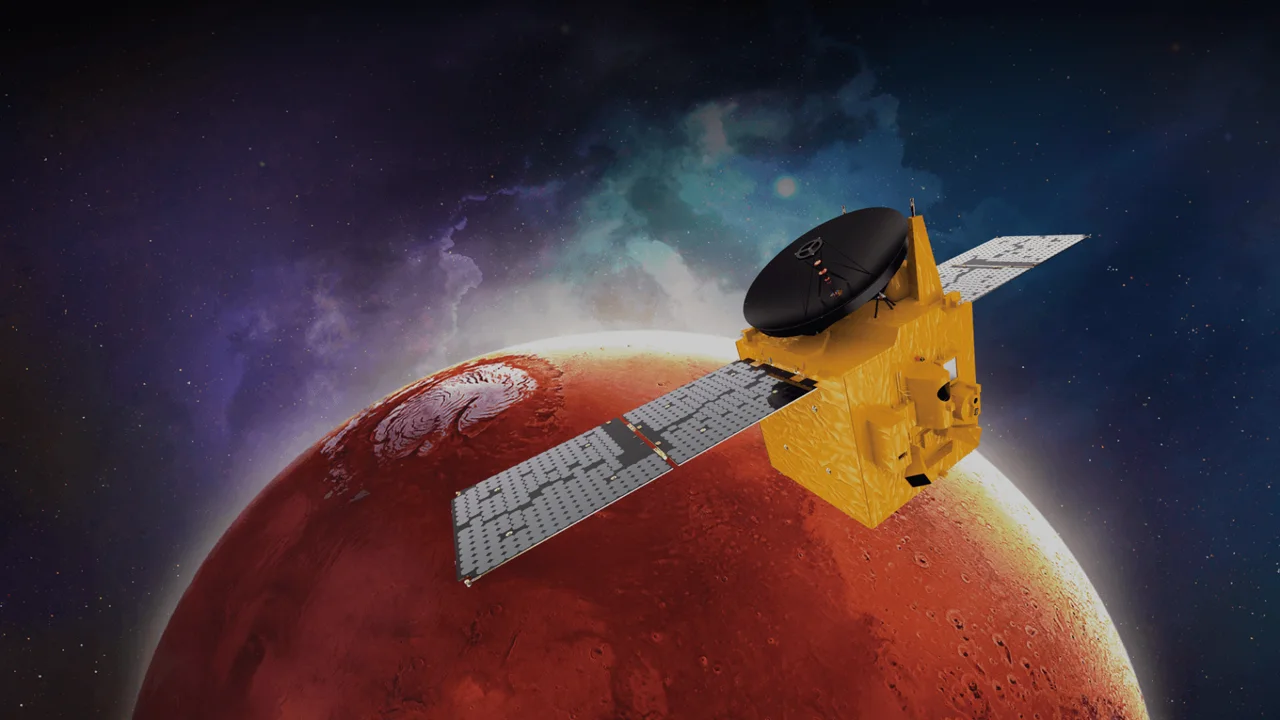
This illustration shows the Emirates Mars Mission Hope orbiter around Mars. Credit: UAE Space Agency
UPDATE 1: The first to slip into orbit was the United Arab Emirates' Hope mission. This spacecraft arrived on February 9, for a 2-year uncrewed mission to circle Mars and collect data on the planet's atmosphere and weather systems.
UPDATE 2: Next to arrive was China's Tianwen-1 mission, on February 10. This combination of orbiter, lander and rover will now circle Mars for around two to three months before it advances to the next phase. When the team is ready, in April or May, the spacecraft will release the lander and rover to descend to the surface.
UPDATE 3: On February 18, at 3:55 p.m. ET, NASA's Perseverance rover successfully touched down in Jezero Crater.
With a 10 minute and 42 second communication delay between Earth and the spacecraft during the landing, NASA had no direct control over Perseverance as it completed the last seven minutes of its long journey to Mars. The robot had to do everything on its own — atmospheric entry, parachute deployment, ejection of the heat shield and detatchment from the backshell, the flight to a safe location by the descent stage, and the final 'skycrane' descent to the surface. As they did with the Curiosity landing nearly 9 years ago, the mission team has dubbed this the 'seven minutes of terror'.
Watch Perseverance's 'Seven Minutes of Terror' and the real engineers that experienced it here on Earth
Now safely on the surface, Perseverance will explore an ancient dried-up river delta in the hopes of finding evidence that living organisms once thrived on Mars.
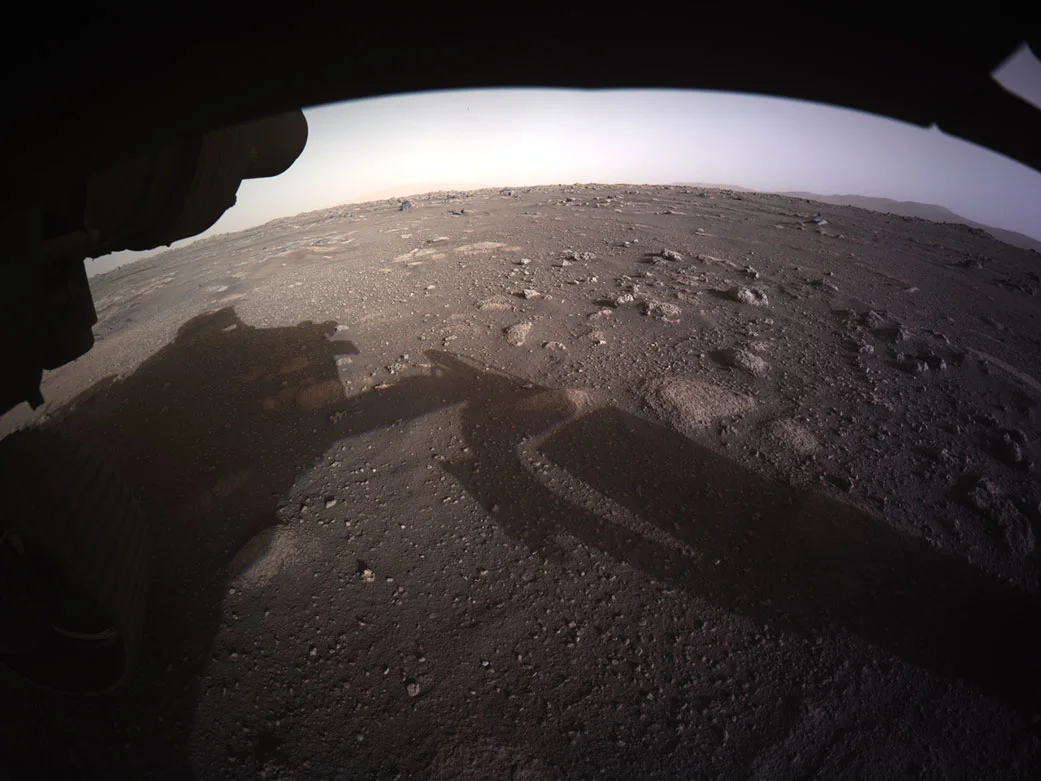
This first colour image from Perseverance rover's front hazard avoidance camera shows off its view across the floor of Jezero Crater. Credit: NASA/JPL-Caltech
UPDATE 4: As of April 1, 2021, Perseverance gone through a battery of tests to prepare for its science mission, it has taken its first drive, and it is now preparing to deploy the Mars Helicopter, Ingenuity. The rover first discarded the debris shield that protected Ingenuity during landing, and it has now driven to a suitable spot for the flight test.
As shown by the latest images sent by the rover, Ingenuity has swiveled to an upright position below Perseverance, its legs have deployed, and it now only waits to be lowered to the surface of Mars.
UPDATED: JUPITER
NASA's Juno spacecraft is still looping around the largest planet in our solar system, and some important news just came down the pipe for its mission.
Throughout the first half of 2021, Juno will complete three more 'perijoves'. During these maneuvers, the spacecraft flies very close above Jupiter's clouds and then loops far out from the planet to exit its intense magnetic and radiation fields. These flybys are set to take place on February 21, April 15, and June 7.
Watch below to see what a 'perijove' looks like from Juno's perspective
Under the mission's original schedule, on its next close approach to Jupiter after that, on June 30, Juno wasn't just going to fly over the gas giant's clouds. It was going to dive INTO the clouds, ending its mission.
UPDATE: As of January 8, however, Juno received an official extension to its mission, delaying this end. Now, Juno will expand its studies to examine the entire Jupiter system, including its diffuse rings and numerous moons, until 2025.
Keep watching for updates on this important mission!
THE SUN
From here on Earth, the Sun is going to be putting on two particularly spectacular shows in 2021. The first is the June 10 Annular Solar Eclipse, which will be visible across parts of northern Canada and across the Arctic. The second is the December 4 Total Solar Eclipse, which will sweep across Antarctica. Neither will be easy to view directly, but someone is bound to be livestreaming both of these events.
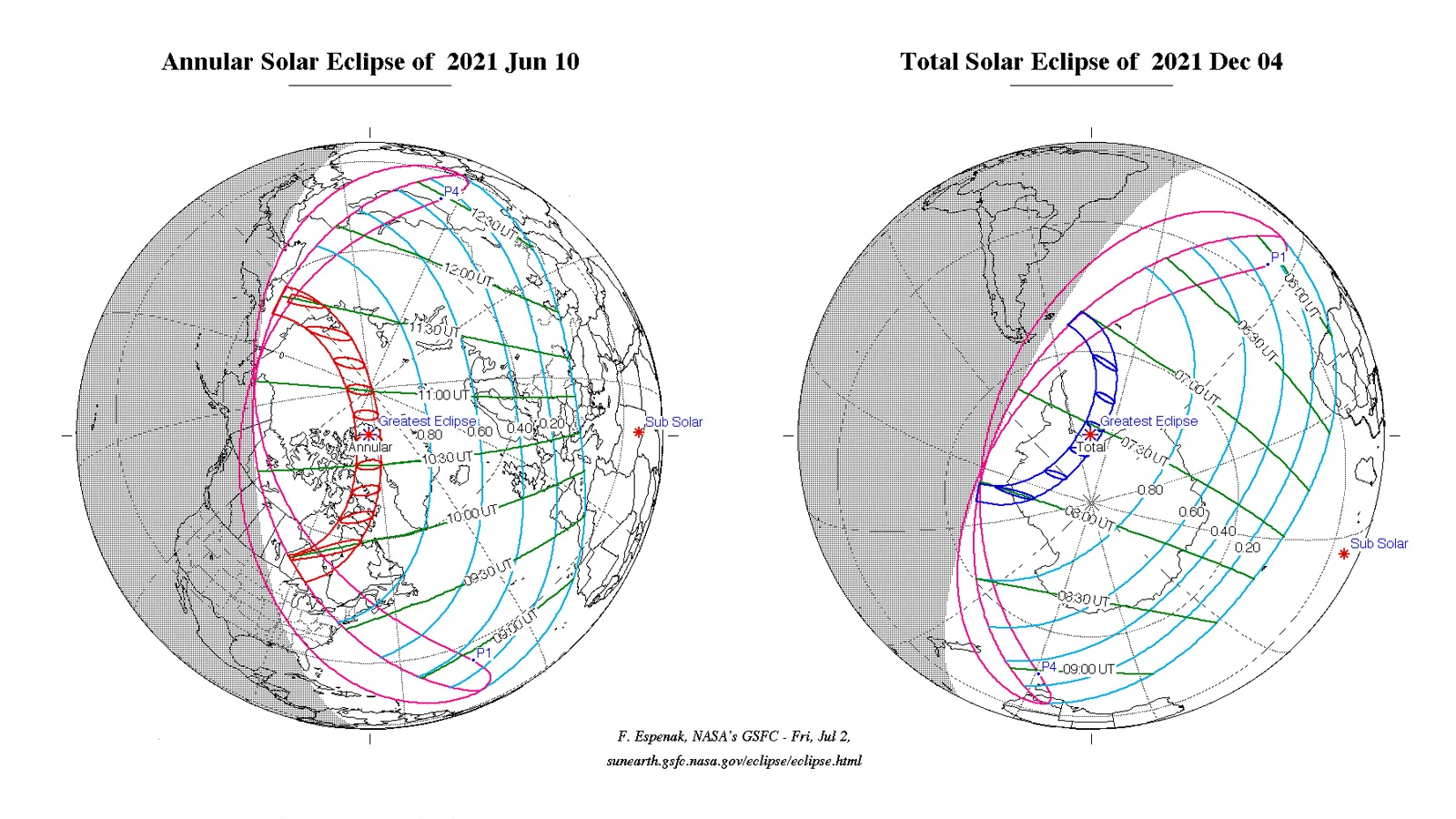
The two solar eclipses of 2021, at opposite ends of the Earth. Credit: Fred Espenak/NASA GSFC
Closer to the Sun, NASA's Parker Solar Probe and the ESA's Solar Orbiter are still revolving around, sending back data and providing scientists with some amazing discoveries.
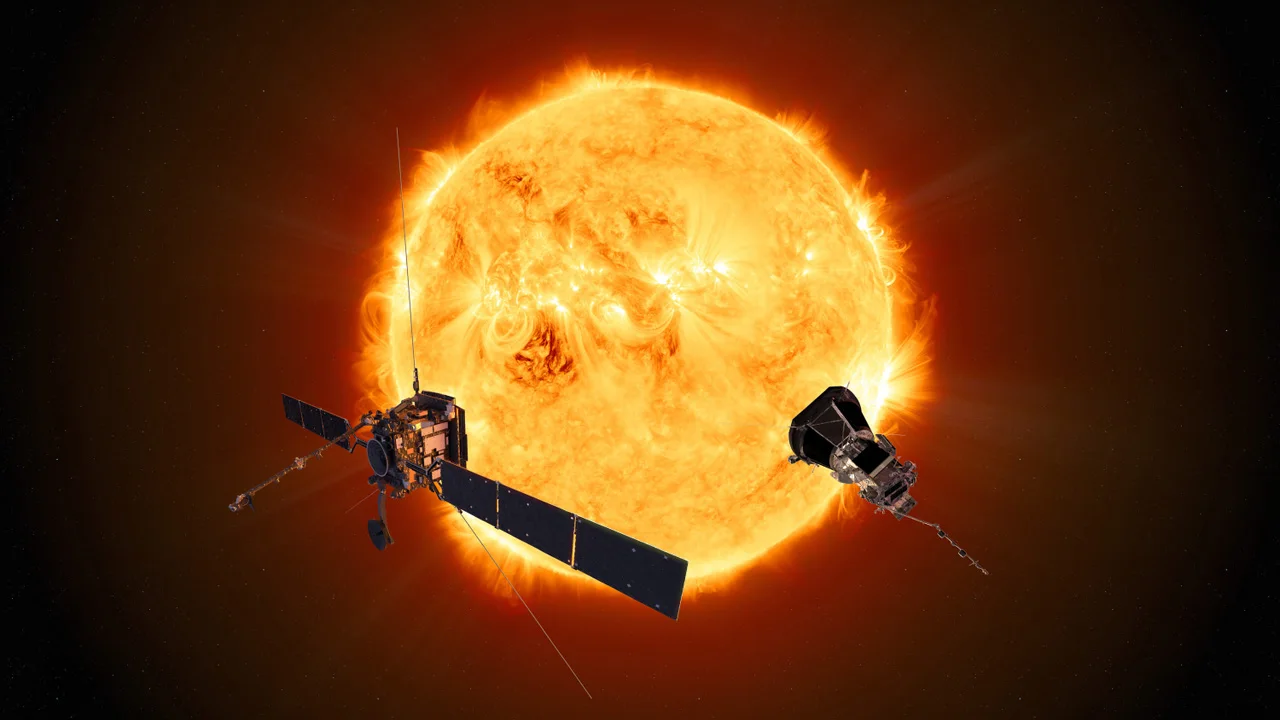
The Solar Orbiter and Parker Solar Probe are shown together in this artist's rendition. Credit: ESA
As they continue on their missions, the Parker Solar Probe is prepared to set two new records in space exploration this year. PSP makes four 'close approaches' (known as 'perihelions') to the Sun in 2021, on January 17, April 29, August 9, and November 21. Even as of its first perihelion, PSP was already setting a new record for how close it came to the Sun (beating out the Helios 2 spacecraft from 1976). Still, it keeps setting the bar closer and closer.
While the January perihelion will be 14.2 million kilometres from the Sun (the same as its September 2020 flyby), in April it will come to within 11.1 million kilometres. Then, in November, it will "inch" closer, reaching a distance of 9.2 million km from the Sun, which is the closest it will get for all of its perihelions up until September of 2023.
Solar Orbiter, on the other hand, does not get as close to the Sun as the Parker Solar Probe. It maintains a stable orbit that brings it to within 42 million kilometres distance on any particular close pass. Still, the spacecraft coordinates solar wind and coronal observations with the Parker Solar Probe.
Solar Orbiter also takes the closest direct images of the Sun of any spacecraft. PSP also has cameras, but they do not image the Sun itself. Instead, they image the corona, off to the sides of the Sun. Solar Orbiter's camera snaps pictures by briefly opening a small door in the spacecraft's Sun shield and then quickly closing it again to protect the camera's sensitive optics.
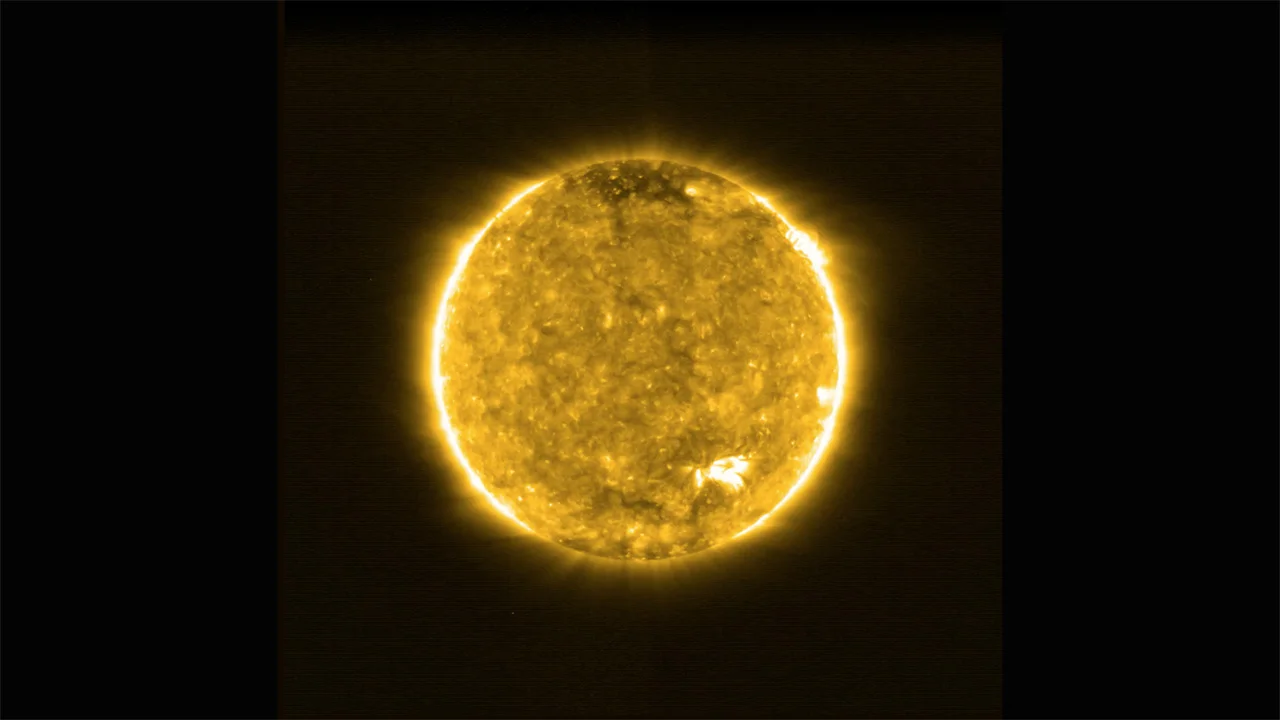
Solar Orbiter's first image of the Sun, taken on May 30, 2020. Credit: ESA
Watch for updates throughout the year as these missions meet their milestones, as schedules shift and change, and as even more amazing missions get added to the calendar.











